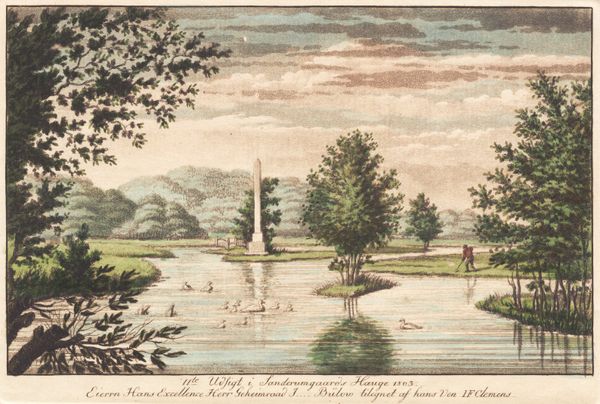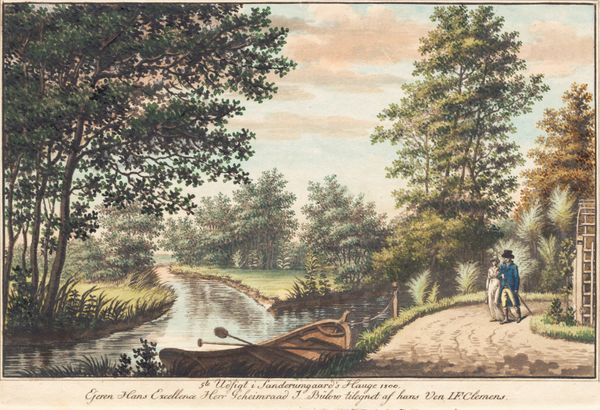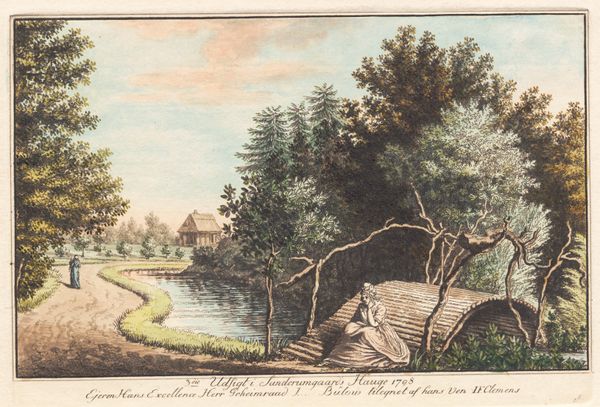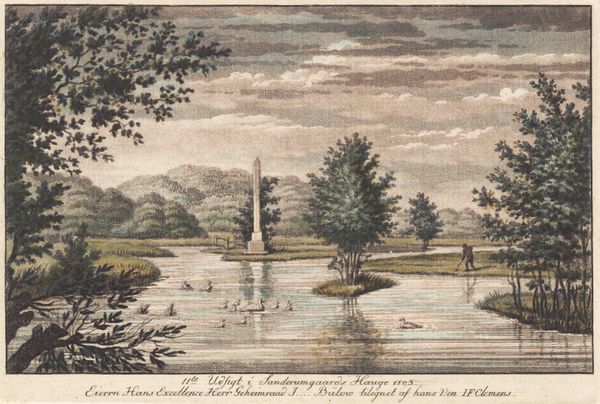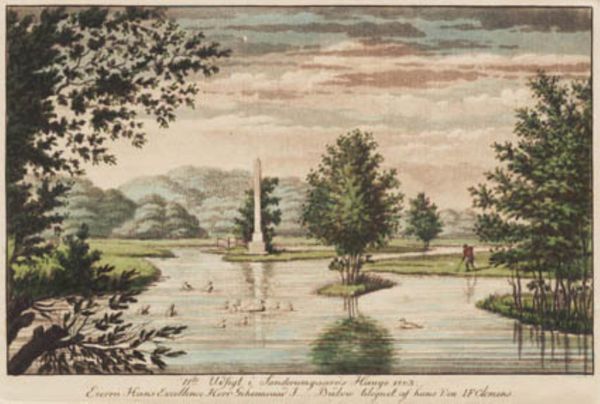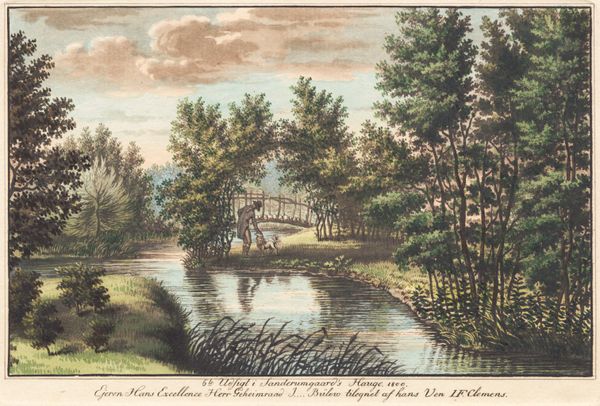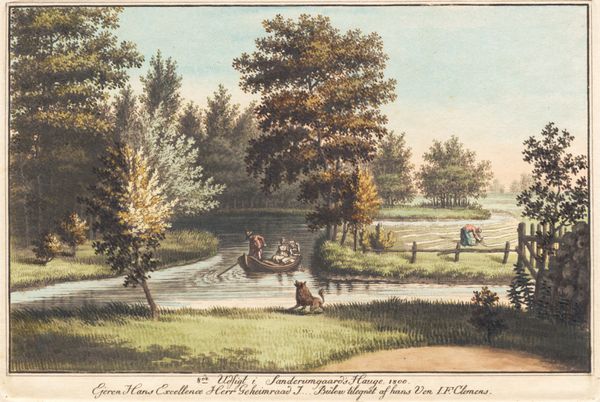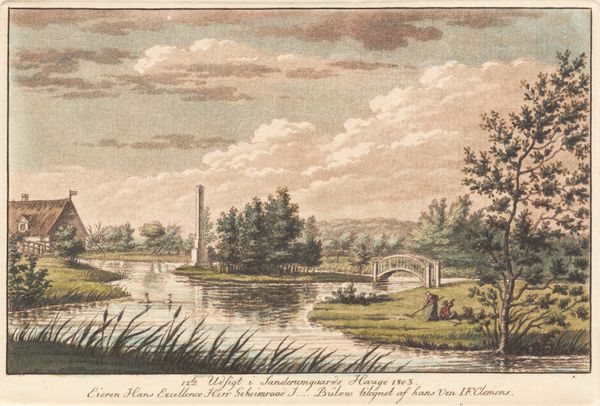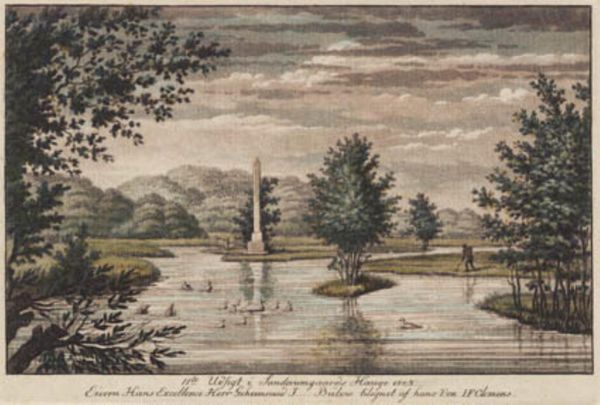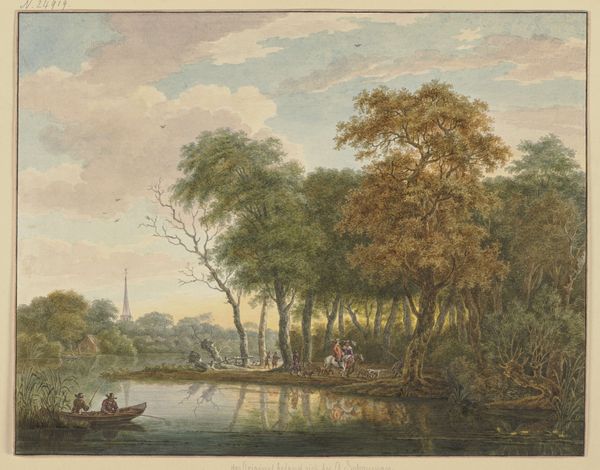
aquatint, coloured-pencil, print, etching, watercolor
#
aquatint
#
coloured-pencil
# print
#
etching
#
landscape
#
watercolor
#
coloured pencil
#
romanticism
Dimensions: 164 mm (height) x 220 mm (width) (bladmaal), 113 mm (height) x 171 mm (width) (plademaal), 105 mm (height) x 167 mm (width) (billedmaal)
Editor: Here we have J.F. Clemens’ "Sanderumgaards Have 8," created around 1800, using aquatint, etching, watercolour, and colored pencil – quite a combination! It's a serene landscape, almost like a carefully staged pastoral scene, but something about it also feels deliberately constructed, perhaps even propagandistic. What historical narratives are embedded in such an image? Curator: That's a keen observation. We can view this landscape as more than just a pretty picture. Think about who commissioned it, likely someone wealthy like "Hans Excellence Herr Scheimraad J. Bülow", as the inscription states. How does this commission shape our understanding? Editor: Well, it suggests this image is about portraying wealth and power, doesn’t it? The idyllic scene becomes a symbol of the commissioner's domain, a celebration of their control over the land. Is it designed to evoke a sense of national pride as well, with the flag and carefully curated nature? Curator: Exactly! Consider the context of the late 18th century – a period of significant social and political upheaval. Landscape art increasingly played a role in shaping national identity and justifying existing power structures. What do you make of the choice to include people in the boat, almost like a voyeuristic view? Editor: It adds a human element, making the landscape more relatable, less abstract. But also perhaps suggesting control and a clear social hierarchy – the people on the boat navigating through *his* land. I hadn’t thought about landscape art as being such a powerful statement! Curator: And that is the beauty of contextualizing art, and considering how socio-political powers shape artistic expressions. By thinking critically about who created this, who paid for it, and who the intended audience might be, the piece becomes much more fascinating, doesn't it? Editor: Absolutely! I see so many new layers in this image now, thinking about the power dynamics and historical context behind its creation.
Comments
No comments
Be the first to comment and join the conversation on the ultimate creative platform.
